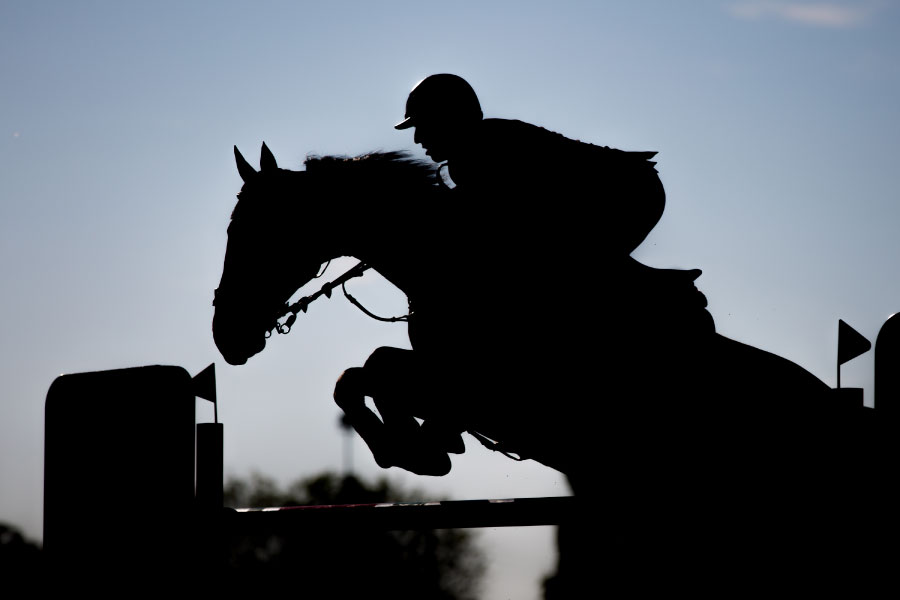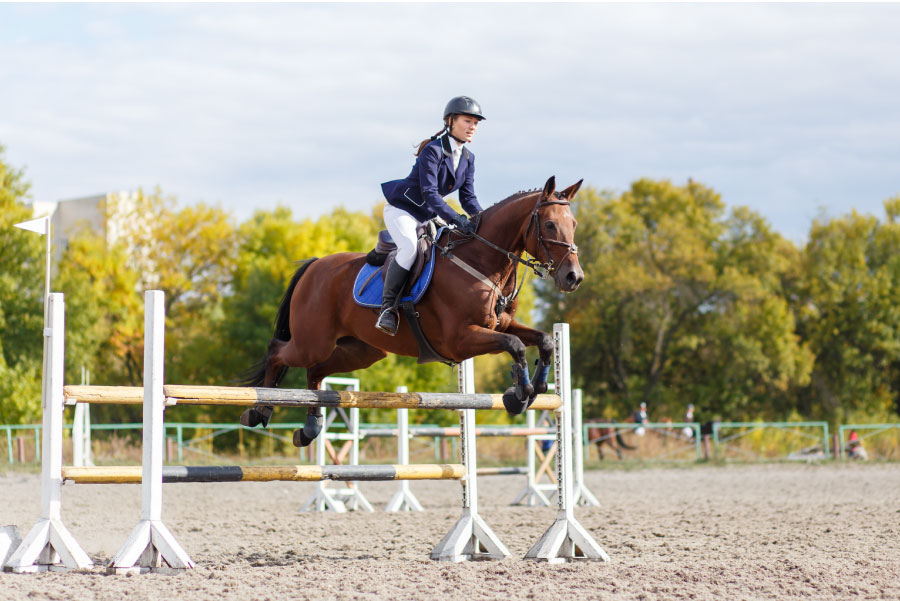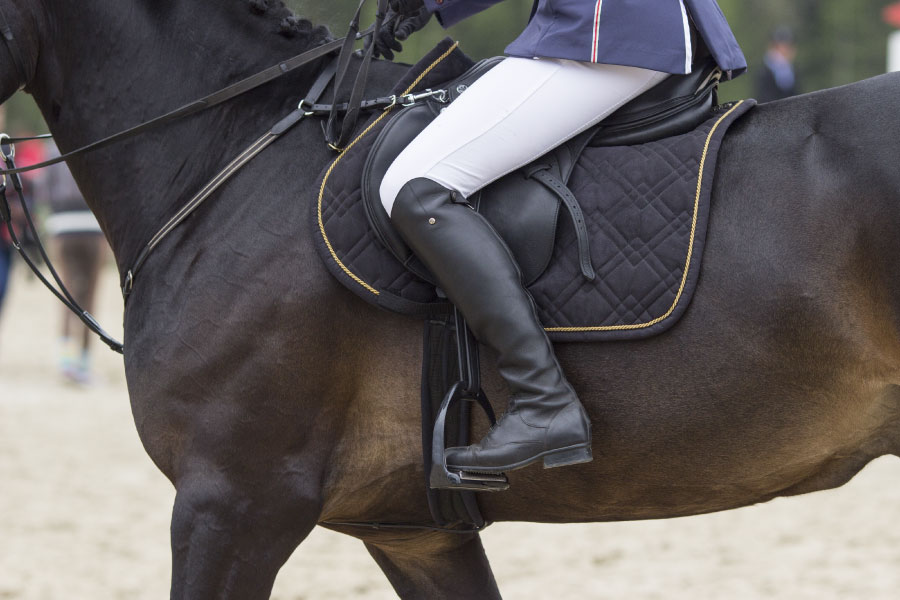- Your source for stall mats, rubber arena footing, arena harrows and arena dust control.

The equestrian world is a billion-dollar industry. Showjumping is expensive, and as I try and break it down in this post, It is hard to say precisely how expensive show jumping is. I will try to bring light to all the expenses you will face when becoming a showjumper to try and give you a rough idea of what to expect.
Showjumping is an expensive sport and depending on what state or region you live in its hard to say just how expensive show jumping will be. Here are just a few things to consider:
- Training
- Stabling
- supplements
- Shoeing
- Vet bills
- Tack and equipment
- Competitions
- Traveling
Let’s break it down and examine each of these in more detail to see how much this sport would cost the average person to get into.
Horses for jumping
Buying a horse is expensive, and you will have to try a few different horses to find a good showjumper that can take you up through the levels. Finding the right horse for you will depend on your experience level and your goals and ambitions as a rider.
Adult show jumping is usually done with either warmbloods or thoroughbred horses.
Warmbloods
The most common showjumpers found today are warmbloods. These days they are found all over the world but originated in Europe. They are big and extremely powerful sports horses designed for jumping. Warmbloods don’t come cheap and are generally not a “first horse” to buy unless you want to spend big bucks on a schoolmaster type horse. Warmbloods go from anywhere between $20,000 – $30,000, to a couple of million.
Thoroughbreds
Thoroughbreds are great all-rounder sports horses. When you find a good thoroughbred, there is no reason why they cannot hold their own against a warmblood. The thoroughbred horse is a more affordable option, especially when starting out. I find them a lot more forgiving beginners and for riders still learning and making mistakes.
Thoroughbreds are also a good option when transitioning from ponies to horses. It’s a big ask for a young kid to go from a small pony to a big strong warmblood.
Thoroughbreds can be bought as trained showjumpers at a much lower price than warmbloods. The most affordable thoroughbreds are OTTB (off the track thoroughbreds), where you can buy them straight off the racetrack and train them up yourself.
This is usually a gamble, so you would have to know your bloodlines well and choose thoroughbreds with known jumping bloodlines to increase your chances of getting a good jumper.
Buying from the track is dangerous for newbies to the sport, so make sure you get the advice of an experienced equestrian rider or trainer. OTTB’s range anywhere from FREE to maybe $1,000 to $2,000. If the thoroughbred is experienced and trained, they can range anything from $6,000 to maybe $10,000 depending on their experience level.
Training
Jumping lessons
Showjumping requires hours and hours of training for both the horse and rider. Investing in proper training from an early age is essential for success. You might not be able to afford a top horse, and when that is the case, invest in top training. Trainers can vary in price depending on their experience and status.
Flatwork
Depending on your level, you might need to have a different trainer for flatwork. Jumping trainers will primarily spend your lesson on jumping training. Showjumping horses will need to have some basic flatwork or dressage training in place. Sometimes showjumpers require an additional flatwork or dressage coach to ensure proper flatwork training on the horse is established, especially if you are riding a young horse.
Riding schools
If you are just starting to learn how to ride, you might first want to take some lessons at a riding school that specializes in show jumping. This will enable you to ride at safe, experienced horses while learning. Riding schools’ tuition can vary in price depending on the location. You will be paying to lease the horse for the lesson and the fee of the trainer.
The price of learning how to ride depends greatly on where you live, but the average cost I would say is anywhere between $25 to around $50 per lesson.

Stabling
Stabling is one of your highest costs you will spend monthly, and it will all depend on what it includes. Stabling for your horse will include all the maintenance and can be costly. When you pay for livery, then you don’t have to worry about keeping your horse’s stable clean, ordering food, grass, and shavings, feeding your horses, turning him in and out from the paddock grooming, etc.
Feel free to check out my article on whether horses are happy in stables here .
.
Diy
Not everyone has the time to do DIY stabling as It will require you to look after your horse full time. When choosing a DIY option, you usually only pay a significantly smaller fee that can cover the rent of the stable and maybe a paddock, the rest is up to you.
When choosing full DIY, you are responsible for everything from feeding your horse, to grooming, to mucking out the stables and making sure grass and food are delivered on time. You might pay a third of the cost, but this can feel like a full-time job.
Half-bait
Half baiting a horse is when you lease your horse out to another rider, and they end up paying for half the stabling. Depending on the terms of the agreement, you will have to share your horse with another rider, but you end up paying for half the cost. This is usually an excellent solution for people that don’t ride often enough but don’t want to sell their horses.
You could, of course, also be on the other side of a half bait agreement. You might not be able to afford a showjumper of your own, but you are willing to pay half for the upkeep of the horse. This is a good option for people that might want to advance from riding school horses.
Supplements
On top of your stabling, any additional supplements are usually excluded from your stabling. Supplements can range from things like oil to maintain a healthy weight and achieve a shiny coat—joint supplements like MSM, hoof supplements, balancers, calming supplements before competitions, etc.
Shoeing
Horses, being shoed correctly, is vital for show jumping. Showjumping horses get shoes done on either a four-week cycle or a six-week cycle and can range between $40 – $120 depending on what shoes your horse will need. Depending on the types of shoes your horses need, for example:
Full set
A lot of showjumpers need full sets of shoes. This means the horse gets shoed on all 4 legs. Higher-level horses might need additional stud shoes for competitions that will also cost extra.
Half-set
It will cost a bit less as the farrier will usually only put shoes on the front legs and trim the back hooves.
Barefoot
Even if you have a barefoot horse, they will still need to be trimmed and kept for jumping. Trims are a lot more affordable than shoeing. The downside for keeping showjumpers barefoot is that the ground can become slippery, especially jumping bigger on grass arenas. If you are jumping mostly on grass, then consider half sets, especially when you are competing over bigger tracks.
Corrective shooing
Sometimes corrective shoeing is necessary to achieve the right shape of the hoof; this again can cost extra. For example, when I bought my OTTB, he virtually had no heel, and bar-shoes had to be put on to help his heels grow out a bit.
Vet bills
Getting a vet out is usually not a monthly expense, but if you own a horse, you will be paying a few vet bills during the year. Competitive showjumpers will need to keep their passports up to date to compete.
Depending on the regulations, your horse will require all sorts of shots (like flu shots). Depending on the country or state you compete in, this usually must be stamped by a licensed vet inside your horse’s passport.
Vets are also needed when purchasing a new horse, especially for show jumping to ensure the horse is sound and strong enough to sustain jumping. Vet checks can range from a basic vet check to a full vet workup that might include x-rays of the horse’s back and joints.
Insurance
Having good insurance for your horse is important as a smaller monthly fee is better than a heavy vet bill. For example, if you are not insured and do not have money to pay for a colic surgery (which is super expensive), then you would have to pray for a miracle.
It is heart-breaking to put an animal down because you do not have the money to help them. When you become a horse owner, you are responsible for them, so being insured is the more responsible thing to do.
Like any insurance, you get a range from basic coverage to more critical care coverage for your horse.
Dentist
Your horse’s teeth will need dental work from when they get broken in and start their training. A dentist is required every 6 months for competitive horses. A horse feeling discomfort or pain can quickly cause problems in his flatwork and jumping, so it is crucial to make sure your horse gets his teeth done.
Your veterinarian can do dental work, or you can get an equine dentist out to do it. Equine dentists are usually more affordable then vets, depending on what kind of tools they use.
Physios
Showjumping is hard on the horses’ body, so getting a physio out is necessary to keep your horse healthy. Physios will be needed more often the higher you jump and especially when competing regularly.
Physios can also help with “maintenance” on your horse’s body by keeping him sound and pain-free. Physios can also be required for treatments for horses coming back from injuries and also for horses confined to box rest.

Tack
When it comes to tack, you don’t have to go all out to get started. The basics will be a properly fitted saddle, a bit and bridle, and some boots. You will then acquire what you need over time, depending on your horse. You can do a quick Amazon browsing or a google search for tack shops in your area to see what you are getting yourself into.
Bits
No horse will go in the same bit his whole career. We usually start with easy on complicated bits when they are young a then move on from there. You might have to change the bit plainly because your horse has gotten used to it and is less responsive. You might find you need a stronger bit for competitions and a softer bit or training at home.
Saddle fitting
The sad thing about saddles is that just because they fit now, they might not fit in the future. Once you have finally found the perfect saddle that suits both you and our horse, you might find that a year or two later, your horse’s body has changed, especially in young growing horses and horses starting that are still building and developing muscles.
We as showjumpers can spend a small fortune on saddle fitters. On top of everything, your saddle will need to be re-flocked (depending on the saddle) occasionally to maintain the right balance. Some saddles can be flocked to try and fit your horse, but if your horse has changed too much, you will probably need a new saddle.
Another way around fitting saddle is by using back pads. Memory foam back pads are particularly popular as they can help make the saddle fit; however, you might pay less for a new saddle. Some sheepskin back pads allow pockets for additional padding to try and correct the saddle
You want your horse to be as comfortable as possible. You won’t go jogging in a pair of shoes that are two sizes too small, so make sure your horse’s saddle fits correctly.
Additional tack
Additional tack showjumpers might need things like ear bonnets for shows, spurs, additional training reins, and neck stretchers for flatwork. You might need lunging equipment for lunging, overreach boots, training gloves, a halter, hay nets, and water buckets.
Rider gear
Again, you do not need to go all out when you are a novice, but buying competition gear can break the bank. Competition pants must be either flesh or white (not for everyday riding). A show jacket, a white-collar shirt, full boots or gators, gloves, and a quality helmet, and that’s just for competitions!
For a comprehensive guide on exactly what gear you need for showjumping, check out our post “Showjumping Wear: Exactly What To Wear And Why! “
“
Buying second hand
Tack can usually last for years and years if properly looked after and well maintained, so don’t be scared about going for some second-hand tack. You can find great quality stuff at lower prices.
It can be especially helpful to buy second-hand saddles in the likely event that your horse might outgrow the saddle. Bits are also really good to buy second hand as they last for decades (they go in a horse’s mouth for goodness sake).
Competitions
Going to competitions is expensive, and it’s not as simple as just entering a show and competing. There is a reason why many riders seek sponsorships to enable them to compete and travel to competitions every weekend.
Membership fees
On top of paying entry fees to shows, depending on what country you live in, you will still need to become a member and register with all the equestrian associations and clubs to compete.
Registration is usually required for not only you but also for every horse you compete on. In the country I compete in, for example, we pay for three different registration fees for both the horse and rider before being allowed to enter a competition.
Show entries
In show jumping you get training show and graded shows.
Training shows
Training shows are way more relaxed and at a lower cost. For training shows, any person can design a track, so you’re not getting a professional course builder. However, training shows can be a great way to introduce your horse to shows and practice courses without it reflecting on your or your horse’s record.
Graded shows
Graded shows are expensive and for the more serious competitors. Graded shows are pricy, and you will be jumping tracks designed by proper course builders (mostly). Show facilities can also sometimes add a ground levy to the entry fee and depending on where you live an anti-doping fee for spot-checking riders.
Traveling
When traveling to competitions, you will need some traveling gear for your horse, such as a halter, hay nets, water buckets, traveling boots, a tail bandage, and a light traveling blanket. If you do not have a horsebox, you will have to rent one.
If you are stabling at a competitive yard, they might have a truck for horses traveling to the same shows. This is usually more expensive than a horsebox. If you have a horsebox, then this is more convenient, and you will only need to pay for gas to and from your shows. You will need to renew the license on your horsebox and have it serviced once or twice a year.
Groom
Having a groom is a luxury in most countries, and sometimes hiring a groom to accompany you to shows is needed—especially when riding multiple horses and you are running around between classes.
In conclusion
As you can see, there are many costly elements to the sport of showjumping, and if you’re just starting out, you will have to invest quite a bit of money to get started.
I’ve been involved in showjumping for most of my life and I can tell you that if this it your passion, it’s totally worth it.

